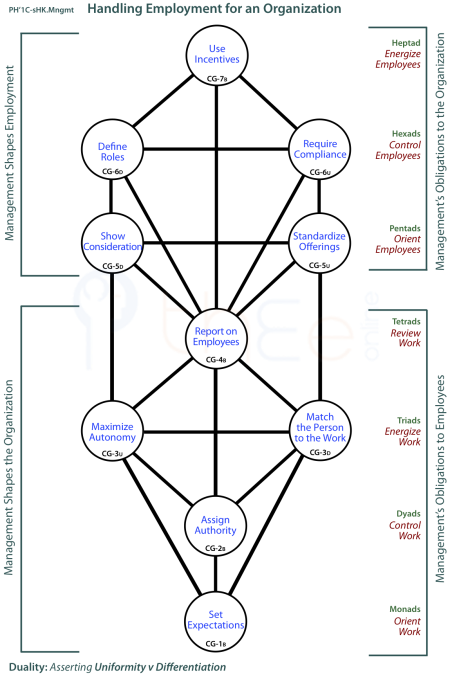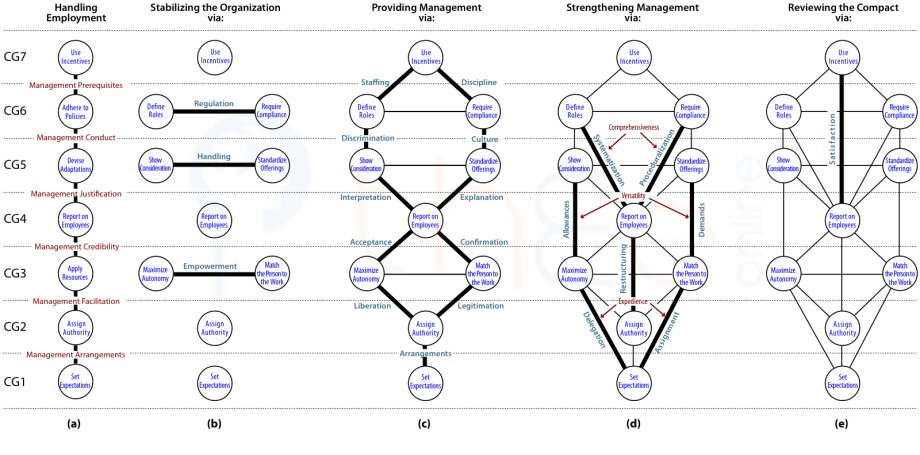Management's Framework
The diagrams here were created during a step-by step analysis. The following topics briefly review this work, mainly via diagrams. Then some parts of the Tree framework are extracted to see the story each tells.
Here is how we developed the of large numbers of staff in modern organizations.
![]() Click to see. Narrow or close the navigation column for best viewing.
Click to see. Narrow or close the navigation column for best viewing.
Employees and the Work

The Employees v The Work to be Done is the Internal Duality in the Tree for management's . This duality reflects what is obvious to observers and employees alike: i.e. it is what management is about.
Using: We = Our Organization....
► What work do we need to get done? and then
► Do we have or can we get the employees able to do that work? and then
► How well are we matching the two?
Employees are the only resource able to mobilize and create all other resources. So they deserve to be privileged. In any case, this is a THEE framework: it is focusing on the psychosocial reality of an organization and how that is created and developed.
Note that the «» to be complied with in the upper segment, and hence the work to be done in the lower, are developed as part of Achievement. Policies and strategies can only be expected to be satisfactorily developed if employees are appraised and handled well within the lower segment.
Look at more definitions of management.
Upper Pole
The 5 Centres in the top 3 Levels specify Management's Obligations to the Organization. Management must use incentives to staff the organization in well-defined and necessary roles, ensure all comply with organizational policies, strategies and rules, and provide a flexible face to staff so that there is mutual support at key junctures.
Lower Pole
The 5 Centres in the lower 4 Levels specify Management's Obligations to the Employees (as much as or more than to the Organization). Employees at every level require management to set expectations, assign authority, get them suitable work and allow them proper autonomy. Reporting is also necessary as this forms the basis for recommendations for promotion and references for posts in other organizations.
Now:
- Consider all the Channels.
Originally posted: 30-Nov-2011
